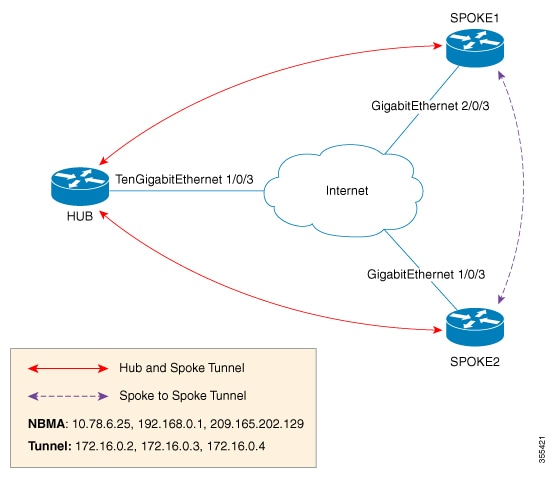Restrictions for Unicast and Multicast over Point-to-Multipoint GRE
-
IPv6 multicast over mGRE tunnel is not supported.
-
mGRE tunnel maximum transmission unit (MTU) does not get auto updated upon IP MTU change in the underlying network. Tunnel MTU has to be updated manually.
-
mGRE can use only IPv4 as the transport protocol, and can tunnel both IPv4 and IPv6 packets across the underlying network infrastructure.
-
Only IPv4 Next Hop Resolution Protocol (NHRP) is supported, , and as a result, an non-broadcast multiple access network (NBMA) can only be IPv4.
-
Bidirectional Protocol Independent Multicast (PIM) is not supported.
-
Tunnel source can be a Layer 3 etherchannel, loopback, physical, or Switched Virtual Interface (SVI).
-
No feature interactions such as access control list (ACL), Cisco Discovery Protocol, Crypto support, IPSec, or quality of service (QoS) are supported on the mGRE tunnel.
-
All routing protocol that uses mutlicast requires additional configurations.

 Feedback
Feedback